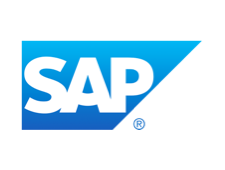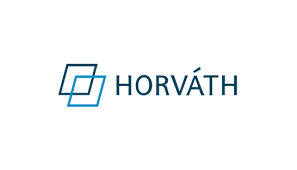SAP POS
Filter By
Browse By
- SAP Analytics and AI
- SAP Application Development and Integration
- All SAP Application Development and Integration
- SAP ABAP
- SAP ABAP Development Tools
- SAP ABAP Test Cockpit
- SAP API Management
- SAP BAPI
- SAP Basis
- SAP BRF
- SAP Business Application Studio
- SAP CMS
- SAP Design Studio
- SAP Development Tools
- SAP DevOps
- SAP EAI
- SAP EDI
- SAP Extension Suite
- SAP Fiori
- SAP Fiori Elements
- SAP Integration Suite
- SAP Low Code Application Development
- SAP Low Code Automation
- SAP Netweaver
- SAP Release Management
- SAP UI5
- SAP Web Application Server
- SAP Web IDE
- SAP Business Process Management
- SAP Center of Excellence
- SAP CIO
- SAP Customer Experience
- SAP Data and Data Management
- All SAP Data and Data Management
- SAP BW
- SAP BW/4HANA
- SAP Crystal Reports
- SAP Data Archiving
- SAP Data Center
- SAP Data Governance
- SAP Data Integration
- SAP Data Migration
- SAP Data Quality
- SAP Data Services
- SAP Data Strategy
- SAP Data Visualization
- SAP Data Warehouse Cloud
- SAP DMS
- SAP Document Control
- SAP EIM
- SAP ETL
- SAP ETL Tools
- SAP HANA
- SAP HANA Administration
- SAP HANA Deployment Infrastructure
- SAP HANA Studio
- SAP Master Data
- SAP Master Data Governance
- SAP MDM
- SAP Enterprise Architect
- SAP Enterprise Asset Management
- SAP ERP
- SAP Finance
- All SAP Finance
- SAP Accounting
- SAP AR AP
- SAP Asset Accounting
- SAP Billing Systems
- SAP BPC
- SAP BRIM
- SAP Cash Management
- SAP Central Finance
- SAP Controlling
- SAP COPA
- SAP Cost Center Accounting
- SAP Currency Risk
- SAP e-invoicing
- SAP FICO
- SAP Finance Automation
- SAP Advanced Financial Closing
- SAP Financial Consolidation
- SAP Financial Planning
- SAP FX Risk
- SAP General Ledger
- SAP Global Tax Management
- SAP Hyperion
- SAP Order to Cash
- SAP Payment Processing
- SAP Profitability Analysis
- SAP Rebate Management
- SAP S/4HANA Finance
- SAP SWIFT Compliance
- SAP Treasury Management
- SAP Universal Journal
- SAP Governance Risk and Compliance
- SAP Human Capital Management
- SAP Intelligent Technologies
- SAP Platform and Technology
- All SAP Platform and Technology
- SAP Business Technology Platform
- SAP Cloud
- SAP Cloud Connector
- SAP Cloud Integration Platform
- SAP Cloud Migration
- SAP Cloud Platform
- SAP Cloud Providers
- SAP Cloud Strategy
- SAP Digital Signature
- SAP Container Platform
- SAP HANA Enterprise Cloud
- SAP Digital Asset Management
- SAP Smart Forms
- SAP HEC
- SAP Digital Integration Hub
- SAP Hyperscalers
- SAP Infrastructure
- SAP Messaging
- SAP Quality and Testing
- SAP Security
- SAP Spend Management
- SAP Supply Chain Management
- All SAP Supply Chain Management
- SAP APO
- SAP Asset Management
- SAP Business Network
- SAP Digital Manufacturing Cloud
- SAP Digital Twin
- SAP EWM
- SAP IBP
- SAP Inventory Management
- SAP Label Printing
- SAP Logistics
- SAP Manufacturing
- SAP Manufacturing Automation
- SAP MES
- SAP MII
- SAP MM
- SAP MRO
- SAP MRP
- SAP Order Management
- SAP Plant Maintenance
- SAP PLM
- SAP Production Planning
- SAP S&OP
- SAP SD
- SAP SPM
- SAP Supply Chain Planning
- SAP Track and Trace
- SAP Transportation Management
- SAP System Administration
What Is Point of Sale?
Point of Sale (POS) represents the customer payment transaction for a brick and mortar or online retailer. As part of the POS, retailers rely on hardware and software to complete the transaction and process the payment.
POS: More than a Transaction
While the POS may appear simply as a transactional activity, it has implications for customer experience and profit for the retailer. Customers want and expect a checkout process that is quick, hassle-free, and easy to navigate.
What Is Point of Sale?
Point of Sale (POS) represents the customer payment transaction for a brick and mortar or online retailer. As part of the POS, retailers rely on hardware and software to complete the transaction and process the payment.
POS: More than a Transaction
While the POS may appear simply as a transactional activity, it has implications for customer experience and profit for the retailer. Customers want and expect a checkout process that is quick, hassle-free, and easy to navigate.
The POS is also critical for understanding customer preferences in terms of product selection and variety. Retailers gain valuable analytical insight into which products are selling, at what time of day, and in what quantity. This can provide better decision-making for the marketing and sales teams.
Lastly, integration between the POS, inventory management, and operational systems is critical for maintaining supply and demand balance and identifying potential revenue opportunities. Replenishment is essential for retailers to ensure the product is on the shelf where and when customers need it. Data from the POS should also be shared with suppliers to collaborate on product promotions and new product introductions.
SAP Customer Checkout Application
SAP’s point of sale solution is SAP Customer Checkout. According to SAP, the following are key POS capabilities of the application:
- Manage sales, returns, payments, coupons, and gift cards with a central POS system
- Access real-time reports, control sales and financial results, and extend and scale the application with flexibility
- Integrate with SAP S/4HANA or other ERP systems, or use as a stand-alone application
Key Consideration for SAPinsiders
- Case Study: AGRAVIS Transforms Its POS System for the Future. In this SAP case study, German agricultural trading company AGRAVIS needed to replace its legacy POS system to meet new cash register regulations and future POS transaction requirements. The company wanted a solution that integrated with its current software landscape, but also created a single source of truth of real-time sales and inventory data. AGRAVIS also required a solution that enabled capabilities for future omnichannel retailing. It chose the SAP Customer Checkout application with native SAP S/4HANA integration and linkage to existing legacy warehouse management systems.
A vendor in the point-of-sale space includes: Verbella.
365 results
-

- SAP SuccessFactors
 Premium
Premium
A Step-by-Step Guide for Creating Job Requisitions from Position Organizational Charts in SAP SuccessFactors
Reading time: 9 mins
Learn how to configure SAP SuccessFactors Position Management and Recruiting integration to create a requisition from the position organizational chart. Integration between Position Management and Recruitment Management provides many benefits, including the ability to create requisitions on the current or a future date. Key Concept The SAP SuccessFactors Recruiting Suite is an end-to-end talent-acquisition solution...…
-

How to Define Position Management Procedures in SAP Treasury and Risk Management
Reading time: 13 mins
Learn how to define and use the position management procedures in SAP Treasury and Risk Management to determine the sequence of steps for generating a derived business transaction. Key Concept SAP Treasury and Risk Management is a series of solutions geared toward analyzing and enhancing business processes in the finance area of a company. In…
-

- SAP Profitability Analysis
 Premium
Premium
SAP S/4HANA: First Steps Toward Real-Time Profitability Analysis
Reading time: 21 mins
As many companies start to reflect on the difference between Profitability Analysis (CO-PA) within the universal journal and the more familiar costing-based CO-PA, it’s time to look at some of the new features that SAP added in the SAP S/4HANA 1610 edition. Key Concept With SAP S/4HANA the familiar concept of real-time postings has been...…
-
-

- SAP Accounting
 Premium
Premium
Track Intercompany Loans Using SAP’s Transaction Manager Module: Part I
Reading time: 39 mins
Learn the process flow, the integration points with other SAP modules, and the advantages of using SAP’s Transaction Manager for intercompany loans. Key Concept Intercompany loans are loans made from one business unit of a company to another, for various reasons. It is important to remember that intercompany loans are an asset (an investment) in one entity and...…
-

Prepare Your Landscape for the Migration to SAP S/4HANA Finance
Reading time: 35 mins
Whether you are already implementing SAP S/4HANA Finance or you are still in the evaluation stage, you need to learn about the architecture considerations before making the move to better prepare your current SAP ERP system for the migration. Sonam Pawar, A speaker at the upcoming SAP Financials 2016 conference in Singapore, answered questions on...…
-

SAP BI Product Convergence Update: What’s Happening Today, What is Coming Next, and What Does It Mean for You?
Reading time: 65 mins
SAP’s BI suite continues its course of ongoing product advancements, and there are significant new product releases on the very near horizon. With the pending SP4 release of SAP BI 4.2 due to impact the full BI suite, and the major new release of SAP BusinessObjects Lumira 2.0 (where SAP BusinessObjects Lumira and SAP BusinessObjects Design...…
-

- SAP Accounting
 Premium
Premium
Track Intercompany Loans Using SAP’s Transaction Manager Module: Part 2
Reading time: 49 mins
Learn the configuration steps needed for the intercompany loans process outlined in the article “Track Intercompany Loans Using SAP’s Transaction Manager Module, Part 1.” The configuration is in line with the process described in part 1 of this article. Key Concept When companies reach a more complex size, they often need to implement financing processes...…
-
-

 Premium
Premium
Enhanced Functionality Facilitates Check Return Processing in FI-CA
Reading time: 10 mins
Learn about the enhanced functionality of the check returns process in Contract Accounts Receivable and Payable with respect to the process involved in posting the checks that are returned from a bank. Key Concept The cash desk is a functionality in which payments are accepted at a company counter or company-specified counters when customers walk...…
-

- SAP SuccessFactors
 Premium
Premium
How SAP E-Recruitment and SAP SuccessFactors Recruiting Management Differ
Reading time: 13 mins
Learn the difference between the functionalities available in SAP E-Recruitment and the SAP SuccessFactors Recruiting Management modules. Key Concept SAP E–Recruiting has recruitment and succession planning instruments that help companies find new employees, employ them in positions that suit their capabilities, promote their professional development, and retain them in the long term. The diversity of...…
-

- SAP General Ledger
 Premium
Premium
Reap Benefits from One of SAP’s Hidden Treasures: Liquidity Planner Actuals Determination
Reading time: 19 mins
Learn how SAP’s Liquidity Planner module for actuals determination works. Discover the advantages and uses of the module. Key Concept SAP’s Liquidity Planner module for actuals answers questions such as how much cash came in related to customer receipts this week or how much was spent on payroll this month. Having quick, up-to-date access to...…
Become a Member
Unlimited access to thousands of resources for SAP-specific expertise that can only be found here.
Become a Partner
Access exclusive SAP insights, expert marketing strategies, and high-value services including research reports, webinars, and buyers' guides, all designed to boost your campaign ROI by up to 50% within the SAP ecosystem.
Upcoming Events
Related Vendors
Your request has been successfully sent


